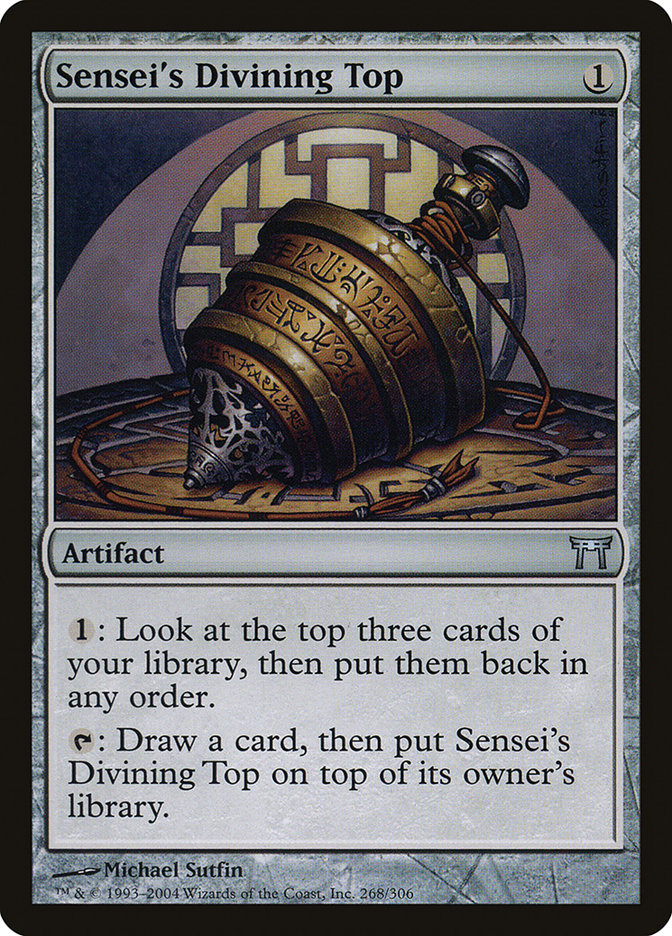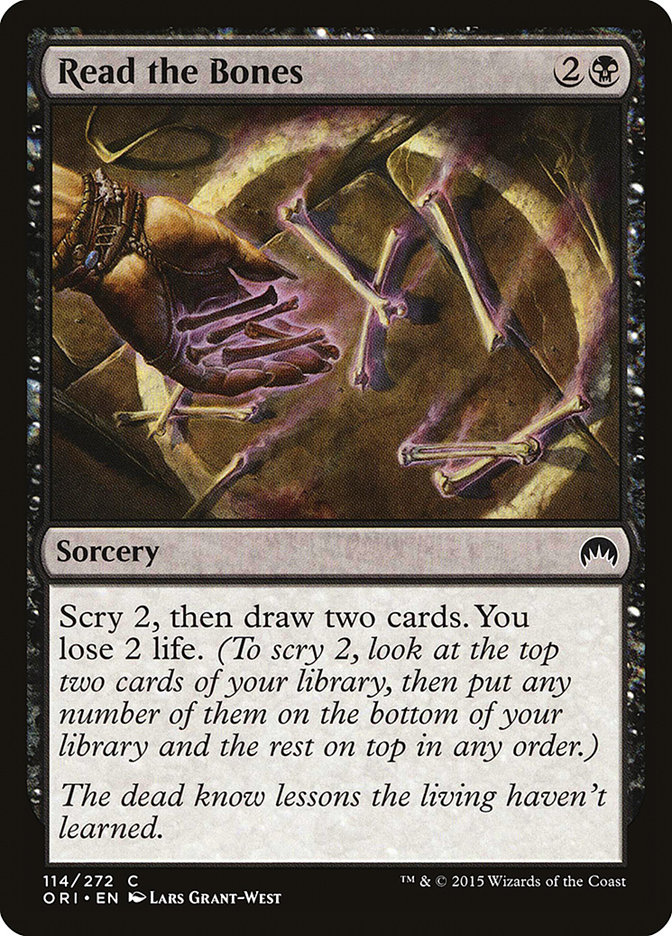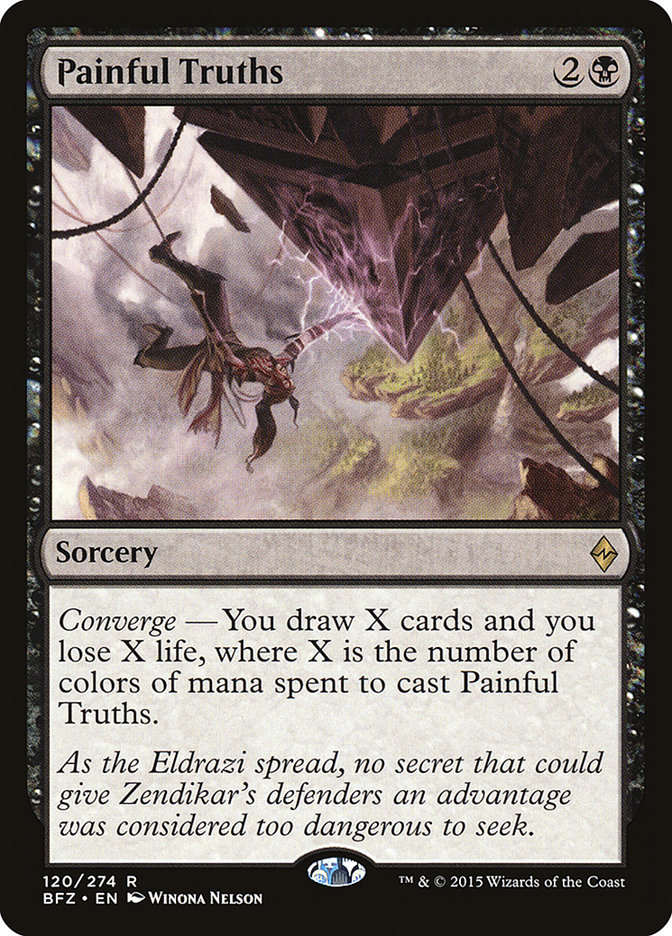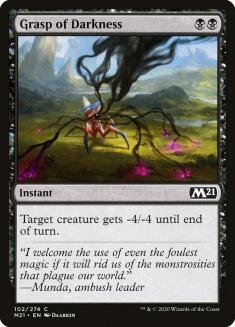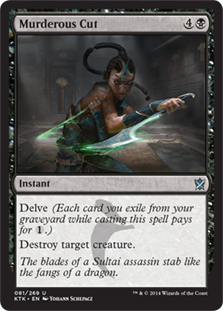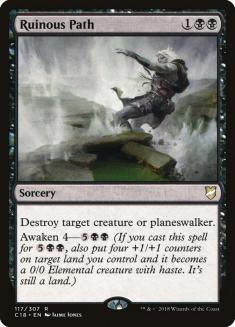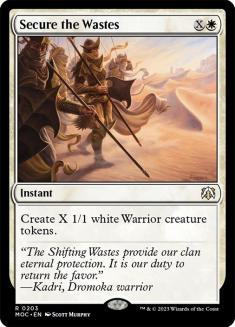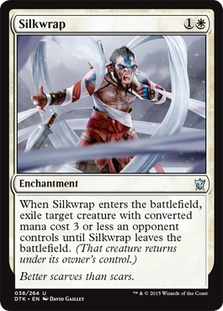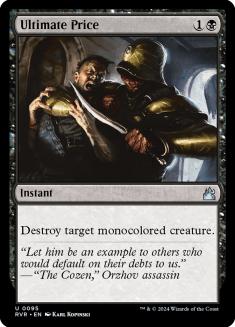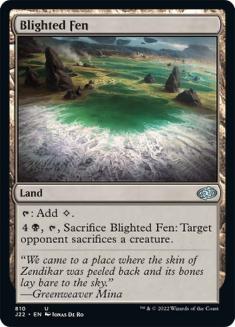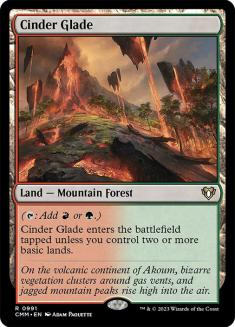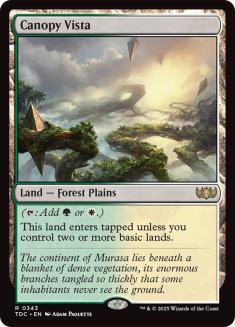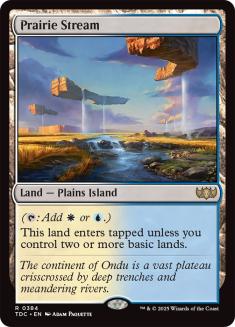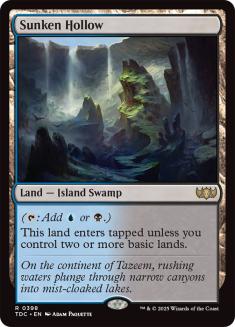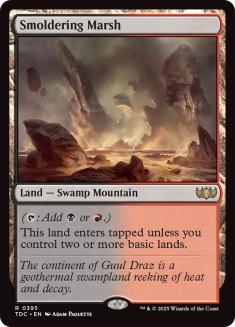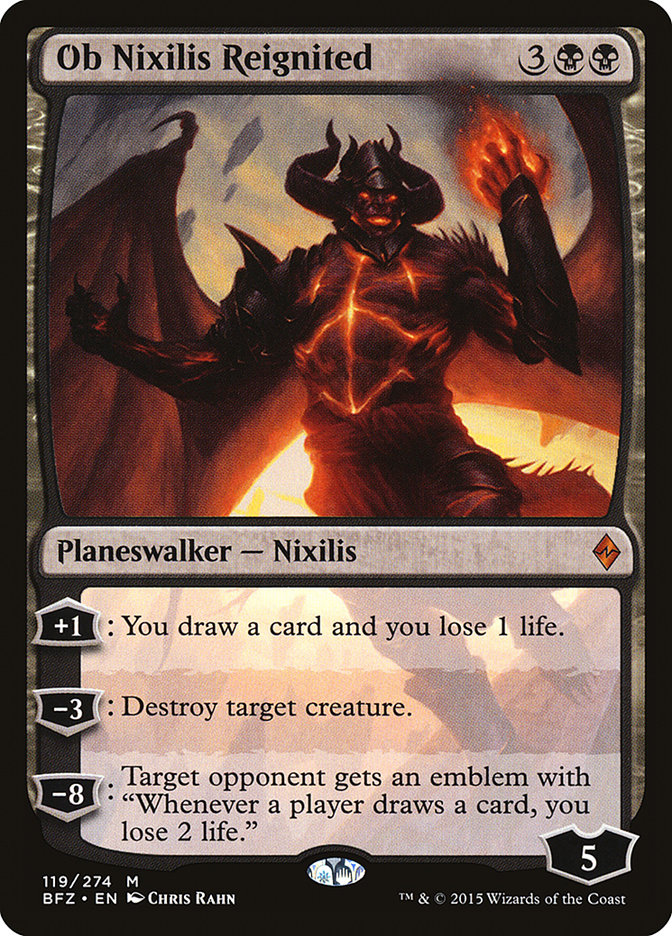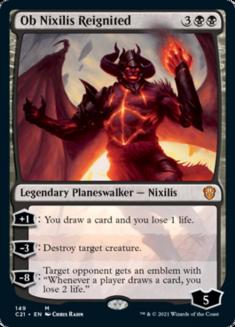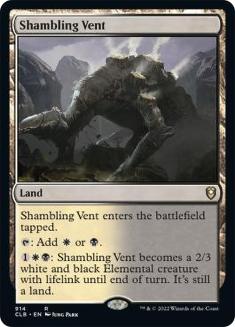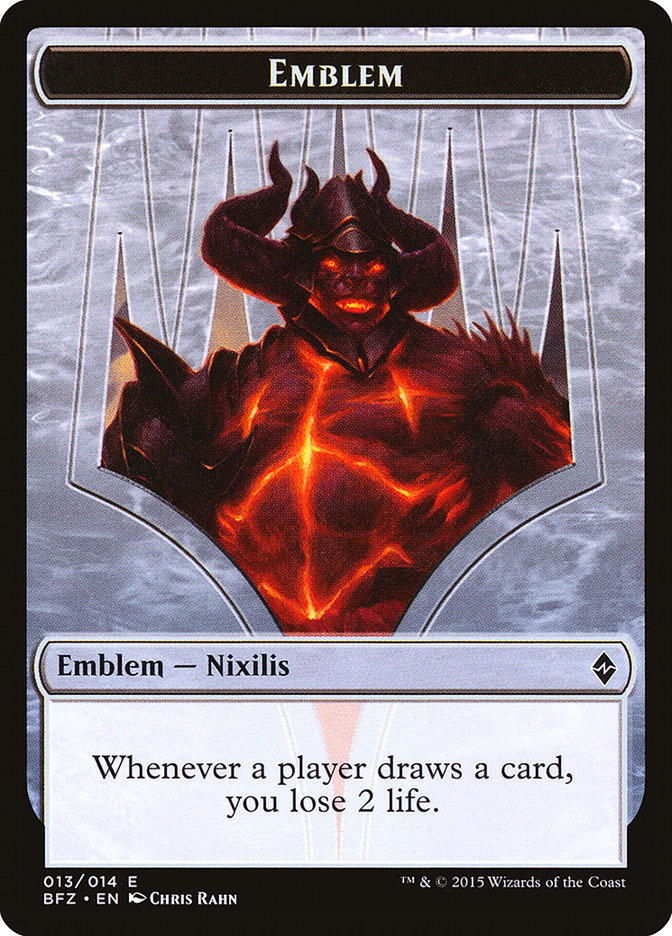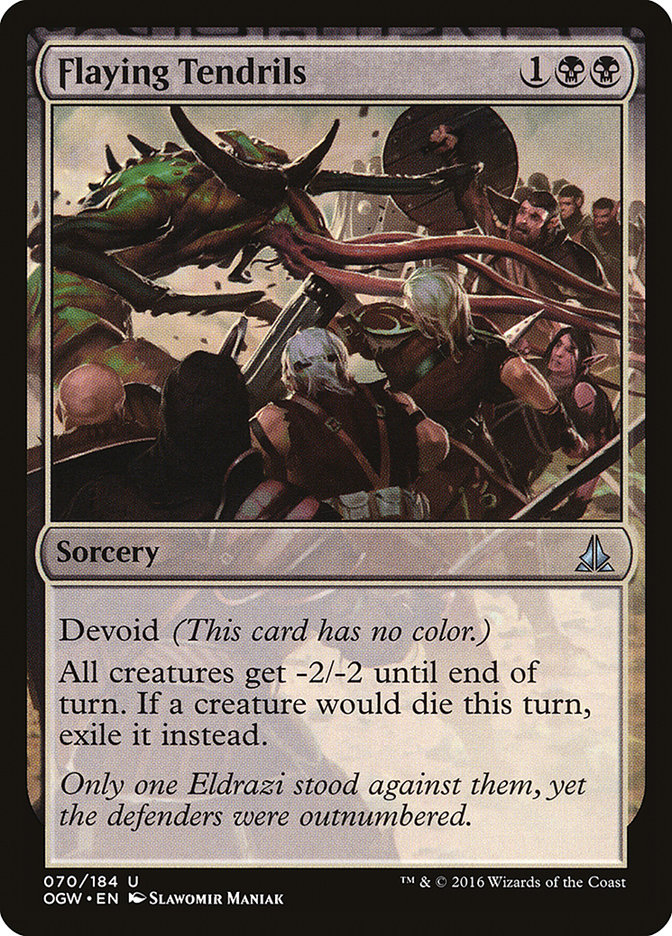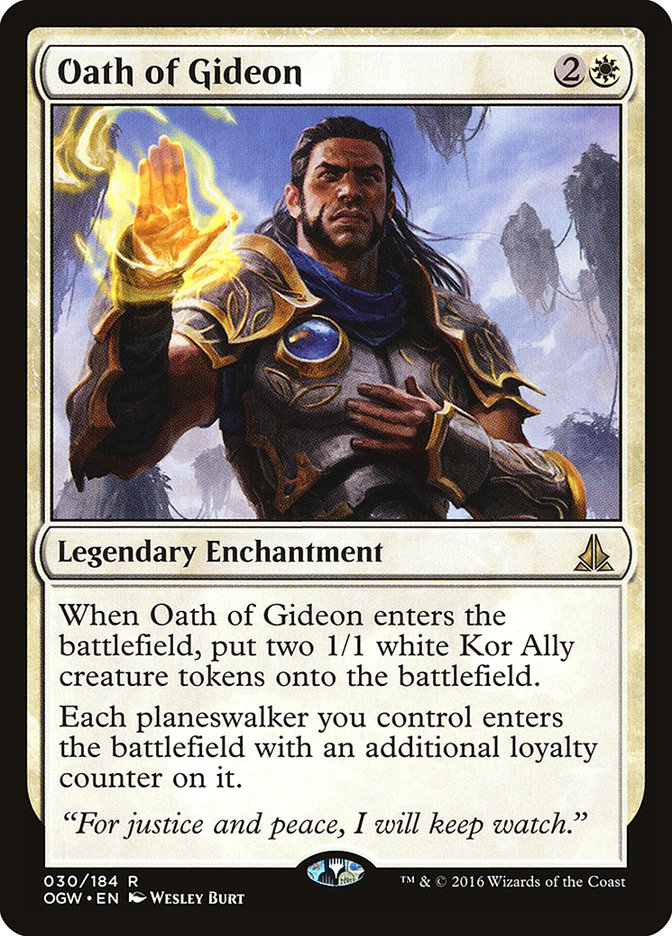Sometimes you see a deckbuilder who just has such a signature style, you can’t help but think, “Wow, this deck is so them.”
Not all deckbuilders of note have this.
Who, for example, played this to the Top 8 of a big event?
Creatures (23)
- 1 Ball Lightning
- 4 Goblin Balloon Brigade
- 2 Dragon Whelp
- 4 Orcish Artillery
- 4 Ironclaw Orcs
- 2 Dwarven Miner
- 3 Gorilla Shaman
- 2 Orcish Librarian
- 1 Orcish Cannoneers
Lands (21)
Spells (16)

Savvy readers will have a guess that it must be someone who has been around a long time. And you’d be right.
This was Patrick Chapin’s deck from the Junior Pro Tour in Dallas, in 1996.
Now, to be fair, this wasn’t exactly a true “Patrick Chapin deck.” Patrick and Andrew Wills were playing the original Sligh, courtesy of The Dojo’s listing of Jay Schneider’s original mana-curve-establishing deck. Not only was Patrick’s “voice” not particularly established yet, but the core of this deck was someone else’s! And yet…
There are elements that speak to Chapin’s touch. In his excellent article, “Ancient History: My First Year on the Pro Tour“, Patrick writes about the experience of honing the deck after literally choosing the deck the night before:
After demolishing his Necro deck, it seemed easy to dismiss the red deck. After all, it’s not a real deck, right? Just to get some practice, I tried the Browse deck against it. It was a massacre.
We locked eyes.
Are you thinking what I’m thinking?
We instantly started laying the deck out, discussing card choices and generally trying to play up the elements that looked most impressive. I even managed to convince him to let me get a Ball Lightning in there. Gotta put the fear of God into people!
Why only one?
Putting the first one in was a major breakthrough! You gotta remember, this is before anyone had ever top 8’ed a Pro Tour with a Mono-Red deck. “Goblin deck” used to be a joking derogatory term for a deck that had no business in tournaments.
You might think he’s joking, calling that first Ball Lightning a “major breakthrough.” But I think it was.
In addition, if we just count the spells, the Chapin and Wills build was seventeen spells off of Jay Schneider’s published 1996 build. That is a lot.
The parts of Chapin I see in this list are innovation, fearlessness, creativity, and an understanding of the value of opponents’ expectations.
One Ball Lightning, in the right deck, is wildly more powerful than none. The single Ball Lightning’s very existence can affect how the opponent chooses to make their plays, simply for the fear of it. More likely, though, at the time, people wouldn’t even be thinking of it at all.
Would it have been better to play four? Yes. But this was 1996 and we didn’t know that yet. Hell, there was a time that people didn’t understand that Sensei’s Divining Top was a good card.
When we look at a deck of Craig Wescoe’s, you can usually see his hand in it. The same tends to be true of many people who don’t just have a vision, but have a perspective. Andrew Cuneo doesn’t just build decks. He has a perspective.
I could make this a list of all of the people who do, to the best of my knowledge, and it might be a long or short list, depending on your point of view. But, instead, I’m going to look at one deck that showcases a perspective, and talk about it.
It starts with this:
This is not a Magic card. It’s wildly outclassed right now. If you’re even thinking about this, you need to get your act together and look at another card.
Or, so goes the common wisdom.
And yet, we have this:
Creatures (4)
Planeswalkers (8)
Lands (26)
Spells (22)

Jeff Hoogland has been doing consistently well with this deck in a world that has been celebrating multicolor with abandon. He’s sticking to a straightforward midrange control deck in two colors. No Rhinos. No Painful Truths.
So, while Top 16 isn’t Top 8, it is still notable, especially given all of the new things going on.
What is it that is making this deck tick? Shouldn’t the midrange elements of the deck take on more of the options that are available to it by adding a color?
Jeff’s simple answer has been that he hasn’t needed them. This isn’t the first time he’s done well with the deck. In the previous version of the list, he’d had a lot of success, and that was when he was relying on Silkwrap and Stasis Snare. The current update of his deck sans a third color affords him the opportunity to play with his mana in other ways. He is running the full four Shambling Vents. He gets the little lifegain bump from Scoured Barrens. Hell, he even gets to play Blighted Fen, and get something useful out of it.
Here is his version from the #SCGINVI in Vegas, before Oath of the Gatewatch:
Creatures (4)
Planeswalkers (8)
Lands (26)
Spells (22)

Here is how he updated his list since then, adding:
He removed:
A large part of this shift is the mana necessities of Grasp of Darkness, which is just an incredible addition to the deck. This is hard, fast removal for most creatures, and while it is shy of killing a Siege Rhino or Tasigur, the Golden Fang, he has twelve cards which do a great job of taking those creatures out.
If Jeff doesn’t need the extra color, what are his rewards for that? Well, while Read the Bones isn’t as much raw card advantage as Painful Truths, the ‘scry 2’ is an incredibly significant portion of the card. When you’re hunting for your good cards, Read the Bones can be significantly better at finding it, especially if someone is attacking you. The one life matters.
The real reward, though, is this:
If you’ve been playing the Battle lands, you know how good they are. But you’ve probably literally lost games because of them.
This isn’t to say that they aren’t good – very good in fact. It is to say that I know that I’ve lost games because of Battle lands in all of the following decks:
Esper Dragons
Atarka Red
Mardu Blue
Jeskai Black
Esper Red
Mardu Green
R/G Landfall
I can say for certain that Hoogland hasn’t lost a game because of his Battle lands in this deck.
That may sound glib, but it is true.
In my article “Zvi Mowshowitz, New Standard & The Three Constraints”, I talked about three natural constraints on mana. One of the most important one is the “pain” that your mana brings. I wrote:
Two – Pain.
Whether you are more aggressive or controlling, the fact remains that you cannot run a deck that takes too much pain from its mana. This isn’t just from cards like fetch lands or Ravnica duals. It is also from your mana coming into play stunted because it is tapped or losing mana from legendary lands. The big reason for basic lands in most decks (notwithstanding Burning Earth) is that basic lands cause the least pain. Taking too much pain, whether in the form of life or time, can make you lose versus an aggressive deck even if you yourself are running an aggressive deck.
One of the key differences between the Access and the Pain constraint: a deck in Modern may be able to cast every spell quickly if it is jam-packed with all of the relevant sac lands and Ravnica duals, but that doesn’t mean it won’t fold due to the other costs of its own mana.
Hoogland’s deck runs a fairly minimal amount of pain-causing elements. While he certainly has eight lands that come into play tapped, with eighteen that don’t, he is able to be able to cast things on time, in most games. In addition, not running Painful Truths and instead having one less damage in Read the Bones and the minor life bump in Scoured Barrens also means something quite significant:
Hoogland can take bigger risks with his life total.
This means he can legitimately activate Ob Nixilis Reignited a lot. Many decks actually can’t get away with this. It means that he might be able to take a hit during combat for positioning that another deck can’t.
As a result he is firmly positioned strongly in a midrange control space, working the control role more often than most midrange decks, but still being the aggressor against the rare more controlling deck. How can he do this?
He can also do this with Sorin, Solemn Visitor and Gideon, Ally of Zendikar, but in essence, but I feel like he mostly does it with these three cards.
Secure the Wastes allows him the ability to push a more controlling deck out of position, because if it resolves, it can overwhelm a board in an almost obscene way. Shambling Vent can nickel and dime an opponent and is actually surprisingly hard to answer for a lot of decks.
Ob Nixilis Reignited is the real monster, though. Drawing cards is great, but with the overwhelming amount of removal that Hoogland has, if you aren’t casting Utter End or Ugin, the Spirit Dragon, there is a good chance you won’t be able to prevent this nightmare:
At that point, you’re on an absurd clock, and there might still be an Ob Nixilis Reignited itself still hanging out!
The only other cards from Oath of the Gatewatch for Hoogland are in the sideboard: one Flaying Tendrils and a pair of Kalitas, Traitor of Ghet.
Flaying Tendrils seems like a great way to help fight against all of the aggressive decks. He only has one, but he also has Dark Petition to tutor for it. You might note that he isn’t running the Michael Majors package (Dark Petition and Virulent Plague) because Hoogland is also running tokens, so that would be pretty counterproductive. His Infinite Obliteration from previous lists is cut, perhaps because of the expectation that ramp would diversify into Kozilek, the Great Distortion, or perhaps for other reasons.
I really love this deck. I look at it, and it screams “Hoogland!” to me. That in itself is an accomplishment – to have enough of a presence to have a recognizable voice – but beyond that, I think the deck is really good.
There is a part of me that is intrigued by the idea of using colorless mana off Caves of Koilos and Blighted Fen, but that is probably a bridge too far for too little payoff (though Thought-Knot Seer does speak to me).
The biggest card of interest to me for the deck is actually Oath of Gideon, if only because this deck is running such a great number of planeswalkers.
This is probably not truly necessary, though I do think I’d want to try it out to see. Linvala, the Preserver strikes me as a more likely potential sideboard card, although the deck I really want to hit is Four-Color Rally, so, perhaps none of these cards are appropriate and we just need to run more against them. To that end, I’d probably see about making room for that Infinite Obliteration to join the discard, Hallowed Moonlight, and Kalitas, Traitor of Ghet.
This is a surprisingly good deck. If you haven’t taken it for a spin, I recommend it. Consistency might not be as sexy as a rainbow of colors, but consistency is also a form of power. I’m still tinkering with a few cards here and there other than how Jeff Hoogland built this, but for now, I think I’m mostly on board with his main deck, and my sideboarding changes above are minor.
I think that people who have their very different perspectives, from potential Hall of Famers like Craig Wescoe to SCG Tour® grinders like Jeff Hoogland, are good for all of us in the game. They remind us that Magic is far too big a game to only have one approach. They keep us honest, because if we don’t pay attention, we might just end up being the slightly more pleasant take on the aggravated loser screaming in the Magic Online chat about losing to “garbage.” The “tiers” we imagine in Magic to describe the competitive placement of decks isn’t just truly imaginary, but oftentimes they are made out of decks that were taken as “garbage” at one point.
Patrick Chapin went undefeated in the Swiss and made Top 4 of the Junior Pro Tour in Dallas in 1996 with an archetype that no one took seriously. Today, we call that deck Sligh, and Jay Schneider’s original archetype is the deck that helped Magic understand the mana curve. While Magic’s physics and behavior are better-explored and -understood now than they have ever been, that doesn’t mean that there isn’t still room for surprising decisions that buck the common wisdom and are worth pursuing.



